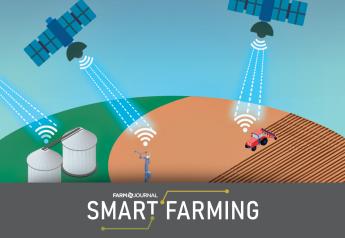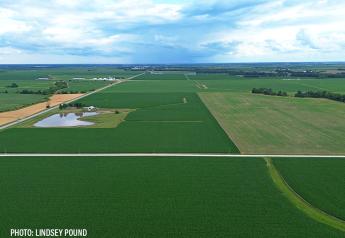Waiting isn't a Marketing Plan—Find Profit Windows in Crop Futures

Selling a crop that’s not yet in the ground can be intimidating, but if you don’t, it might mean you miss good marketing opportunities. Take a look at futures prices today while they’re higher and consider marketing a portion of the 2018 crop—especially soybeans.
“New crop cash bid prices for harvest in central Illinois ranged between $9.70 and $9.80 [for soybeans],” says Todd Hubbs with the Department of Agricultural and Consumer Economics at University of Illinois. “A prudent marketing plan for soybeans this year may possess some selling of new crop soybeans in this price rally.”
Now could be a good time to lock in profitability for soybeans. “I’m talking with a lot of growers about soybeans and we’re watching $10 futures for target price,” says Angie Setzer, vice president for Citizens LLC. “November futures hit $10.15 this week—even with a wider basis that gives you opportunity.”
She says farmers could get a little more aggressive, within reason, at $10 to $10.50 price range. While there is discussion about dryness in the Argentinian soybean crop, Brazil’s crop looks good and the U.S. still has large carryover. This means those targets ($10 range) represent a good time to sell since higher prices could be limited, if they happen at all.
“At 470 million [soybean] bu., the ending stocks forecast is the largest since the 2006-07 marketing year,” Hubbs says. “Forecasts by USDA of Argentine soybean production currently sit at 2.06 billion bu. for the 2018 crop year. Brazilian soybean production forecast increased by 73.48 million bu. over the December forecast to 4.04 billion bu.”
This recent price rally for soybeans mimics what farmers and traders saw this time last year—and there’s a chance much of the marketing year could do the same. Watch for opportunities in corn and wheat similar to what happened last year as well.
“The big thing with corn they told you to do last year was sell the carry, so you had to hedge,” Setzer says. “If you’re looking at $3.90 December futures, for example, you can store and expect carry to put them at $4.15 to $4.20 futures. Spreads turn into cash and give you more opportunity.”
“To hedge or get started around these levels is not a bad idea,” she adds.
Dry conditions in the southern plains could present substantial opportunities for wheat. “There will be substantial marketing opportunity for wheat, but they don’t have to last a long time,” Setzer says. “Could just be a day or two so it’s important to have those orders in place.”
Margins will continue to be tight in 2018. Lock in profitability—gambling on the chance to earn a few more cents doesn’t make sense.







